Polly Umrigar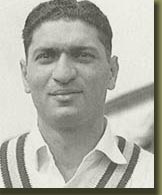 Pahlan Ratanji "Polly" Umrigar was born on 28 March 1926 was an Indian cricketer. He participated in first-class cricket for Bombay and Test cricket in the Indian cricket side, mostly as a middle-order batsman but also bowling sporadic medium speed and off spin. He leaded the Indian side in eight Test matches from 1955 to 1958. When he retired in 1962, he had played in more Tests (59), attained more Test runs (3,631), and recorded more Test centuries (12), than a few other Indian players. He achieved the first double century by an Indian in Test cricket in opposition to New Zealand in Hyderabad. Early lifePolly Umrigar was instinctive in Sholapur, Maharashtra, India, where his father ran a clothing company. His family later on moved to Mumbai.He was a Parsi (from the Zoroastrian group of people in India) that conquered the Bombay cricket in the untimely decades of the twentieth century. He made his first class entrance for Parsis at the age of 18 in the Bombay Pentangular in 1944, and studied for a BSc at St Xavier's College in Mumbai. He skipped the Bombay University side. He also participated in hockey and football at a high altitude. Early Test career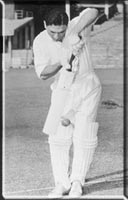 In England in 1952, Umrigar scored a great deal outside Test contests, but in Tests he was an entire failure. His total of 1,688 was the highest in the season for the Indian squad He made more than 800 runs in May and double hundreds in opposition to Oxford University, Lancashire and Kent, but seemed to struggle in opposition to the fast bowler Cuan McCarthy of Cambridge. On the other hand, he made simply 43 runs in seven Test innings, at a standard of 6.14. But more than the deficient in of runs, it was the way that he hitting that was distressing. Despite the fact that facing Fred Trueman, time and again he backed away towards square leg and "(held) the bat out to each ball, missing it like a beginner". Bedser sacked him twice; Trueman fired him four times, and on three instances he was bowled backing away. More has possibly been written regarding this series than any other phase of Umrigar's career. But it must also be noted that Umrigar had far more success in his other meets with fast bowlers. He gained a hundred at Manchester in his next meeting with Trueman in 1959; he topped the aggregate for India in all his three series in opposition to West Indies who at a mixture of times had Frank King, Wes Hall, Roy Gilchrist and Charlie Stayers. It was off the bowling of Hall and Stayers that he played one of the best innings of his career. 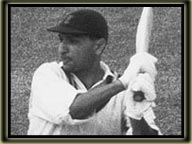 Test captainUmrigar had led India in two unofficial Tests in opposition to the Commonwealth XI in 1953-54 winning one of them. From the second Test game in opposition to New Zealand in 1955-56 till the first Test in opposition to the West Indies three years afterward, he headed the side in eight following Test games. India won two of the New Zealand Tests by an innings.After one Test next to the West Indies in 1958-59, he was replaced as head by Ghulam Ahmed who then announced his departure from Test cricket after two consecutive defeats. Umrigar was once more selected as captain for the fourth Test at Madras, but mystification developed about the replacements for Ghulam Ahmed and Vijay Manjrekar, who was injured. Umrigar hunted for another batsman, Manohar Hardikar, to restore Manjrekar, but Ratibhai Patel, the President of BCCI firmed on the off-spinner Jasu Patel to play in his position. Umrigar reconciled the captaincy on the night before the Test. He symbolized India for three more years but never for a second time captained the country. His 337 runs in the five Tests of the sequence were the highest for India. Late Test careerDuring the trip to England in 1959, he another time scored a great deal outside Test matches, but resisted in the Tests again Trueman and Brian Statham in anticipation of the fourth Test. He achieved three double hundreds in tour matches, the 252* in opposition to Cambridge University was then the maximum by an Indian abroad. He made 230 runs in four Test matches, together with 118 in the Old Trafford Test in his last convention with Trueman.Umrigar's off-spin played a significant supporting role to Jasu Patel in India's first win over Australia at Kanpur in 1959-60, but his batting remained below par, and he missed the last two Tests in the series with a back injury. He scored three hundreds in the series against Pakistan in 1960-61 and another against England at home in 1961-62 (his third century in as many Test innings). 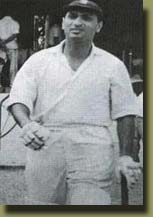 Umrigar sustained to play first-class cricket for Bombay for further season and played his last first class game in 1967-68. Analysis of cricket careerUmrigar was an impressively built man who stood in a minute less than six feet. An offensive player principally strong in front of the wicket, he was competent of destroying everything short of excessive speed. In this approach towards the bowling, he was unique from most of his colleagues. "He was a link among two generations", wrote K. N. Prabhu. "Tentatively he belonged to that assembly of cricketers of the thirties, but in practice his cricket was habituated by the hard, professional loom of the pressing post-independence years". From the before time 1940s, Indian cricket had been ruled by the Merchant-Hazare school of boatmanship which put trauma on preserving one's wicket. Umrigar's batting united the tall scores of this period with the daring spirit of the thirties.Umrigar's bowling enhanced over the track of his career. He bowled off-cutters, hardly escaped the ball and moved it in off the layer. Sporadically he used to bowl medium speed and open the bowling, as at Bahawalpur in 1954-55 when he took his career-best 6 for 74 in opposition to Pakistan. Umrigar rarely bowled for long spells at standard pace. At Bahawalpur he only bowled about six overs "at the greatest tempo that he was capable of, which would be about Ramchand's" (the wickets were in use in later predicts), according to Sujit Mukherjee. 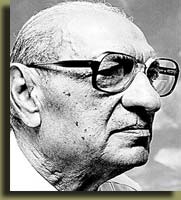 Later lifeUmrigar was the director of Indian touring sides to New Zealand, West Indies and Australia in the late 1970s. He was the chairman of the national selection board amid 1978 and 1982, Executive secretary of the BCCI and the Mumbai Cricket Association Secretary. He wrote a book on cricket coaching and, for a point; he was the curator of the ground at the Wankhede Stadium. He was rewarded the Padma Shri in 1962 and the C.K. Nayudu Trophy in 1998-99 for his involvements to the game. The national Under-15 championship is competition for the Polly Umrigar Trophy.Umrigar was analyzed with lymph cancer and underwent chemotherapy in mid-2006. He died in Mumbai from the poor health on 7 November 2006. He married his wife, Dinu, in 1951. He was endured by his wife, two sons and a daughter. |

Home >
Games >
Cricket >
Polly Umrigar
Common Games Of India || History Of Games& Sport || Pre School Games || School Games || Games For Girls & Women || Team Games

